Aim 03
Promote the sustainable development of the DVMWHS to provide a world-class destination where people are proud to live, work, visit and invest.
Context
The Derwent Valley Mills World Heritage Site, the birthplace of the factory system, saw pioneer industrialists innovate and invent technologies that changed the world. As part of protecting, conserving, presenting, enhancing and transmitting the World Heritage Site’s culture and economy, a central strand of the Development and Tourism Aim is to create an environment that attracts and supports creative industries. The innovations of the valley’s pioneering industrialists act as an exemplar for the creative industries operating with and within the World Heritage Site today.
The repurposing of historic buildings in the World Heritage Site to provide space for creative industries both supplies opportunities for individuals and companies to relocate to the Derwent Valley and to enrich the World Heritage Site’s cultural offer.
This work has already begun with the redevelopment of Building 17 on the Cromford Mills site, which has quickly achieved full occupancy; at Darley Abbey Mills, where numerous previously empty buildings have been brought back into creative industry uses; and Derby Silk Mill, which will have rentable office space and bookable workshop times for embryonic companies.
For the Derwent Valley Mills World Heritage Site to flourish, it needs to be identifiable as a distinct tourism destination, recognised for the significance of its industrial and cultural heritage, and for its unique landscape and natural features. There is a need to achieve a sustainable approach to tourism development in the DVMWHS, through balanced development of sites, strategic marketing, and effective pro-active visitor management. The desired outcome of this work is for an increase in the contribution made by tourism to the economy of the Derwent Valley.
The DVMWHS falls within the remit of the Visit Peak District and Derbyshire Destination Management Organisation (DMO) and Visit Derby. The Peak District is now a Visit England ‘attract’ brand with the aim of attracting visitors to the Peak District and then dispersing them into Derbyshire and North Staffordshire. Tourism within the Peak District generated £1.98 billion in 2015 and supported around 27,500 jobs. The DVMWHS works closely with the DMO, which provides marketing and monitoring services for it attractions. The World Heritage Site is also within the D2N2 (Derby, Derbyshire, Nottingham, Nottinghamshire) Local Enterprise Partnership (LEP), which has an economic focus on developing the visitor economy.
As well as a tourist destination, the World Heritage Site offers great opportunities for other developments/enterprises that will help enhance the area’s vibrancy and vitality.
Key to unlocking both the World Heritage Site’s tourism and development potential is the redevelopment and repurposing of the Belper Mills Complex, as it will provide a focus for a central tourism hub and be a focus to the settlement of Belper, which already supports many creative businesses.
One of the greatest successes for Belper in the lifetime of the previous management plan was the development of the Ambassador Scheme, which trained businesses in the town to become advocates and promoters of the World Heritage Site to visitors/customers. The success of the scheme contributed to Belper being named Winner of Winners in H M Government’s Great British High Street Competition in its inaugural year, 2014.
The environmental and social components of sustainable development are contained within other aims, principally but not exclusively Aims 1, 2 and 4.
Objectives and Actions for 2020-25
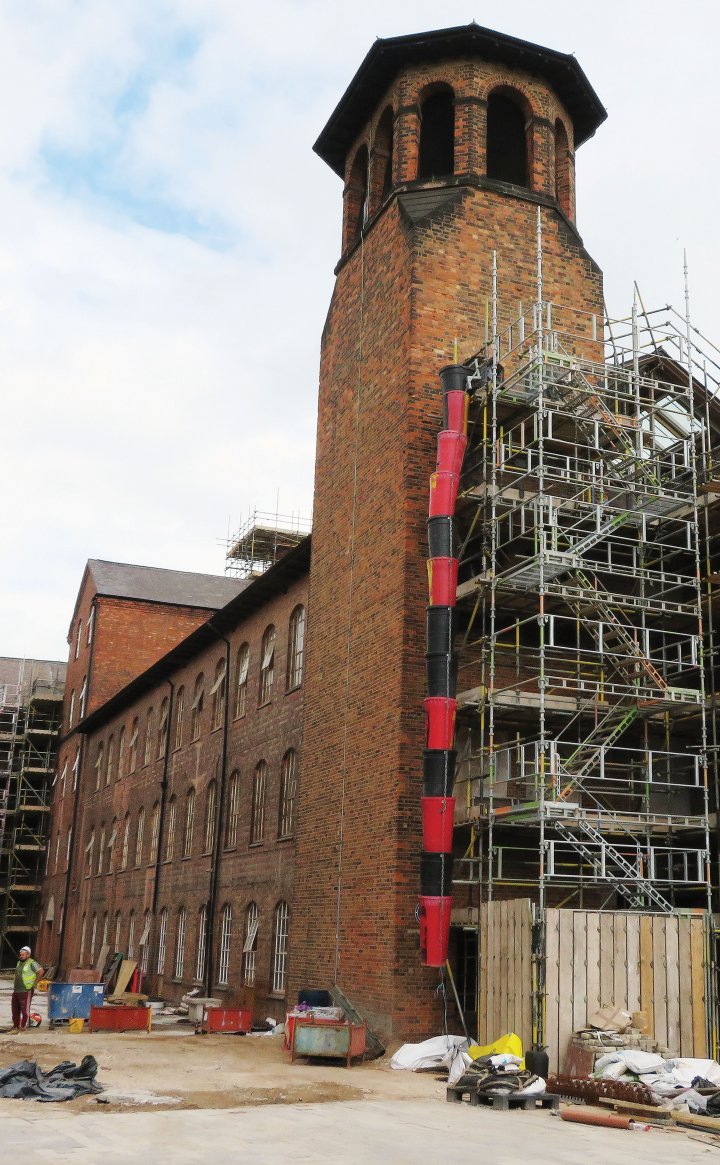
Developing the Museum of Making at Derby Silk Mill
Obj 3.1
Facilitate the promotion of and movement through the DVMWHS by having world-class visitor attractions in each of the three hubs (see 2.6 Spatial Priorities).
ACT 3.1.1
Develop pre-visit information, including a review of the existing website, to ensure it has a greater visitor focus.
ACT 3.1.2
Support the development of a world-class visitor centre in the central hub of the DVMWHS (see Objective 3.2).
ACT 3.1.3
Support the refinement and delivery of the Arkwright Society’s Masterplan for the Cromford Mills site.
ACT 3.1.4
Support the development of the Museum of Making at the Silk Mill in Derby.
ACT 3.1.5
Support Derby Museums in promoting the DVMWHS at the Museum of Making to ensure it functions as the Southern Gateway to the DVMWHS.
ACT 3.1.6
Look at options for strengthening and developing the southern, central and northern hubs of the DVMWHS to promote it as a coherent tourist destination.
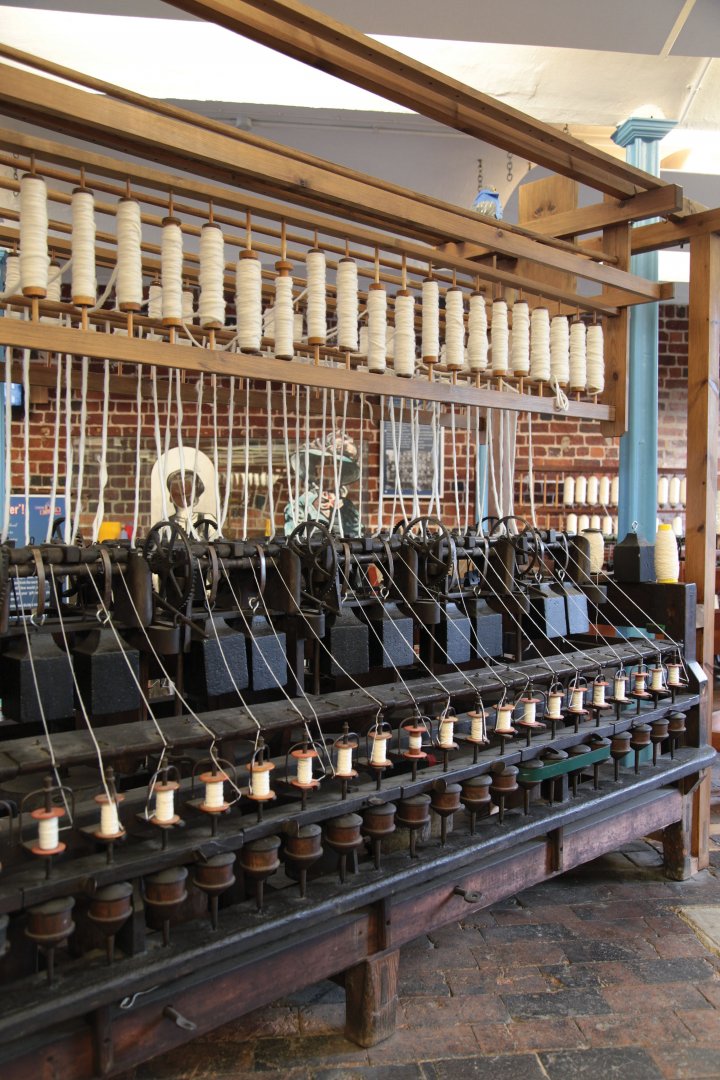
Water Frame, Strutt’s North Mill, Belper
Obj 3.2
Identify the scale/scope of the visitor offer within the Belper Mills Complex.
ACT 3.2.1
Support Belper North Mill Trust and the site owner to develop appropriate plans for the North and East Mills site, that includes a World Heritage Site visitor centre.
ACT 3.2.2
Assist all partners in securing appropriate planning and Listed Building Consent permissions.
ACT 3.2.3
Assist Amber Valley Borough Council, in consultation with Belper North Mill Trust and the site owner, to commission an options and feasibility appraisal for a world-class visitor centre, as part of any development proposals.
ACT 3.2.4
Work with partners for the earliest possible start of works on site once statutory consents are in place.
ACT 3.2.5
Support the owners of the West Mill Site in developing an appropriate scheme for its future use that promotes understanding of the wider Belper Mill Complex as part of the DVMWHS’s Outstanding Universal Value.
Obj 3.3
Start the next phase of development at Cromford Mills, bringing more buildings in the complex into active use, in order to secure the financial future of the site and the charity.
ACT 3.3.1
Support the Arkwright Society in updating the 2011 Masterplan for Cromford Mills, including an agreed public realm environmental improvement scheme for Mill Lane and the reinstatement of the aqueduct (see ACT 3.1.2).
ACT 3.3.2
Assist the Arkwright Society in securing funding and the appropriate permissions for the next phase of the Masterplan.
ACT 3.3.3
Work with the Arkwright Society for the earliest possible start of works on site once statutory consents are in place.
Obj 3.4
Support John Smedley Ltd to ensure the continuation of the Lea Mills site as a working textile factory and visitor destination.
ACT 3.4.1
Support John Smedley Ltd in the production of a masterplan, ensuring its continued and enhanced contribution as an appropriately interpreted attraction (with exhibition space) in a cohesive DVMWHS.
ACT 3.4.2
Assist John Smedley Ltd in assembling consents and funding, where applicable, to deliver the masterplan.
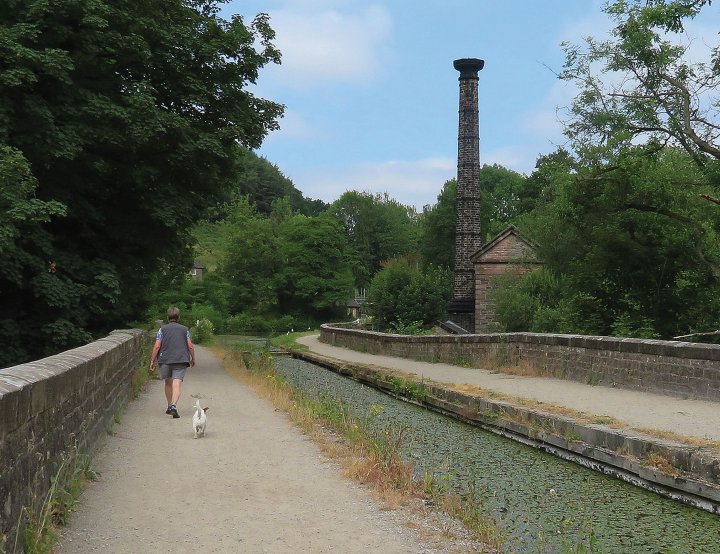
Leawood Pumphouse and Cromford Canal
Obj 3.5
Support Derbyshire County Council’s Countryside Services in sustainably increasing income streams for Cromford Canal and the High Peak Junction complex, including the workshops, wharf shed and Leawood Pumphouse.
ACT 3.5.1
Support the production of an options appraisal to investigate ways to maximize income and DVMWHS engagement potential at the sites to support their financial sustainability.
ACT 3.5.2
Help secure funding, if needed, for the above.
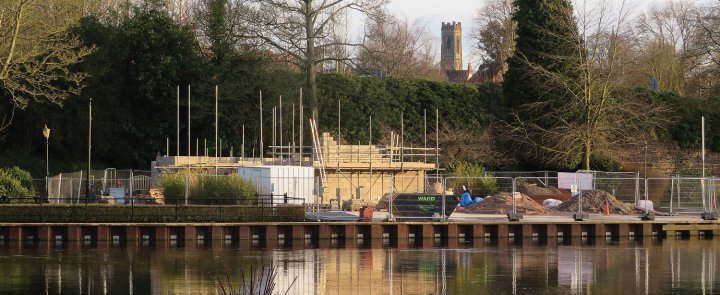
Building of the new tearooms, Belper River Gardens
Obj 3.6
Improve the visitor experience in the Central Hub by securing the appropriate redevelopment of a tearooms in Belper River Gardens.
ACT 3.6.1
Encourage Amber Valley Borough Council’s Landscapes, Growth and Community Safety Service to start construction of the tearooms as soon as appropriate permissions are in place.
ACT 3.6.2
Encourage development of an appropriate business plan to secure the tearooms’ long-term operation and maintenance.
Obj 3.7
Continue to deliver and support the Belper and Darley Abbey Ambassador Schemes, adapt them and roll out to other parts of the DVMWHS.
ACT 3.7.1
Develop and deliver new Ambassador Schemes for Milford and Cromford.
ACT 3.7.2
Continue to support and deliver the Belper and Darley Abbey Ambassador Schemes.

Milford Ambassador training
Obj 3.8
Jointly produce, with the key destination sites, the Destination Management Organisations and the appropriate local authority officers, an over-arching communications and marketing strategy for international, national and local visitors, residents and businesses.
ACT 3.8.1
Use audience research and baseline data established through the DVMWHS Great Place Scheme to produce appropriate and focused marketing materials for visitors and residents, to encourage them to visit, use and understand the WHS and its components.
ACT 3.8.2
Implement the creative style identified in the DVMWHS Great Place Scheme’s marketing project ‘Putting the Valley on the Map’ and ensure all partners are aware of and using the new toolkit created from this project.
ACT 3.8.3
Work with the key destination sites and the Destination Management Organisation to develop an effective social media promotions strategy and ensure appropriate training and guidance on its application throughout the DVMWHS.
ACT 3.8.4
Re-envisage the DVMWHS Visitor Guide, for distribution in and beyond the World Heritage Site. The guide will be downloadable from the www.derwentvalleymills.org website as well as being produced in print.
ACT 3.8.5
Develop a business toolkit to enhance business engagement with the DVMWHS.
ACT 3.8.6
Work with the Trent Barton bus company to have the DVMWHS highlighted, both at stops and through on-bus commentary, to raise awareness for passengers of the World Heritage Site, to encourage visits.
ACT 3.8.7
Produce the DVMWHS newsletter for residents and surrounding communities, for electronic distribution with a small print run available at significant locations within the World Heritage Site.
ACT 3.8.8
Deliver updated versions of the Group Visit Guide, Children’s Guide and Train Window Guide.
ACT 3.8.9
Investigate the possibility of running media training across the World Heritage Site for individuals from the key destinations, the World Heritage Site team and other bodies, who may need to communicate to the media, e.g. radio, television and social media, on World Heritage Site related topics.
ACT 3.8.10
Review DVMWHS branding and ensure it is fit for purpose.
ACT 3.8.11
Promote the appropriate use of the DVMWHS logo and branding in accordance with the operational guidance in Part C of the Management Plan.
ACT 3.8.12
Investigate and develop joint ticketing to encourage the visitor attractions to work together to promote opportunities that will attract and disperse visitors across the WHS.
ACT 3.8.13
Investigate and develop joint advertising, building on the Visit Peak District & Derbyshire joint attractions map, with more opportunities for marketing the different sites and attractions in the WHS.
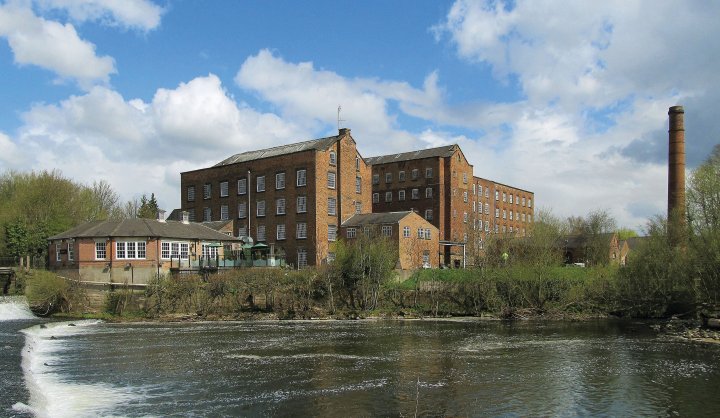
Darley Abbey Mills from the fish pass
Obj 3.9
Improve links with the established business community in the DVMWHS and encourage economic growth and new business for the area.
ACT 3.9.1
Ensure that the DVMWHS is appropriately acknowledged, referenced and supported in the D2N2 Local Enterprise Partnership’s emerging strategic economic plan and subsequent industrial strategy.
ACT 3.9.2
Develop better representation of the business sector and D2N2 within the DVMWHS management structure.
ACT 3.9.3
Work with partners to attract and support appropriate sustainable business growth in the DVMWHS.
ACT 3.9.4
Work with partners, including ‘Love Belper’, to maximise the economic and tourism benefits of Belper’s success in the 2019 Great British High Street Competition, for the whole DVMWHS.
Obj 3.10
Support organisations, such as the Derwent Valley Trust, in developing walking, cycling and waterway leisure routes through and beyond the DVMWHS.
ACT 3.10.1
Encourage the development of business cases, route, land ownership investigation, relevant permissions and assembly of funding for an off-road cycle route through the DVMWHS connecting to other cycle networks north and south of the World Heritage Site. Infrastructure should include e-bike charging and secure bike storage at attractions.
ACT 3.10.2
Investigate the feasibility of a canoe route along the River Derwent and its economic enhancements.
ACT 3.10.3
Review existing walking routes with a view to promoting a cohesive offer.
Obj 3.11
Promote the use of water power as a ‘green’ energy source for the modern age that draws inspiration from the valley’s pioneer industrialists in the 1700s. This will directly link the DVMWHS’s past to 21st century requirements (See also Objective 4.3).
ACT 3.11.1
Investigate the use of interpretation and other methods such as guided walks and talks to promote waterpower and its ‘green’ benefits.
ACT 3.11.2
Support, where possible and appropriate, the generation of hydro power (alongside already established locations) within the DVMWHS.
ACT 3.11.3
Ensure the story of the mills utilising water, as opposed to steam, to generate power, is clearly understood, as there are clear comparisons with modern-day green energy generation. It also needs to be communicated that the beautiful relict 18th century landscape, into which the factory system was inserted, can be appreciated today as it was at the height of cotton manufacture as the factories did not pollute the atmosphere.
Obj 3.12
Explore the viability of establishing a new not-for-profit organisation (e.g. a Community Interest Company, Charitable Incorporated Organisation or charitable company), to be called DVMWHS Enterprise.
ACT 3.12.1
Undertake options and feasibility work on establishing DVMWHS Enterprise.
ACT 3.12.2
Resources permitting, implement the recommendations of the above study.
